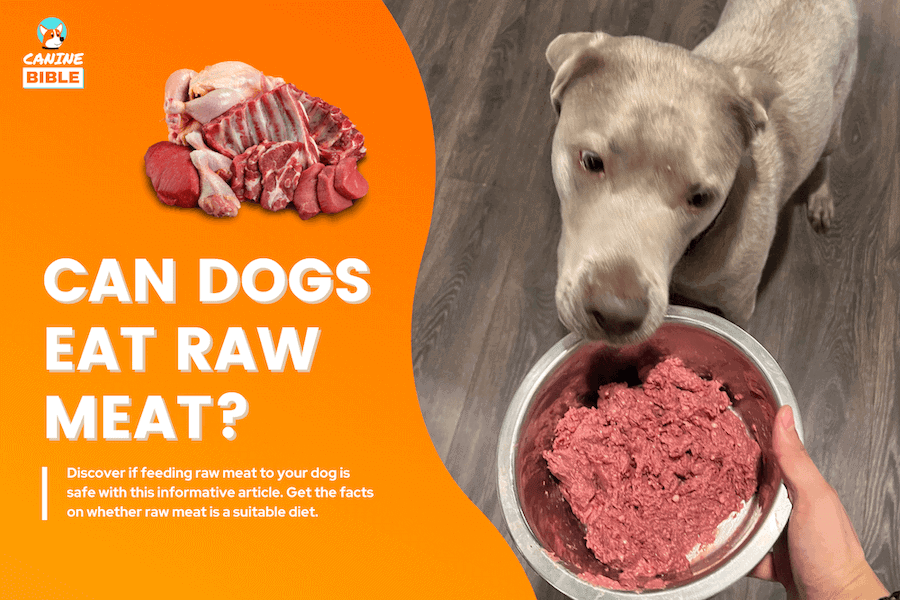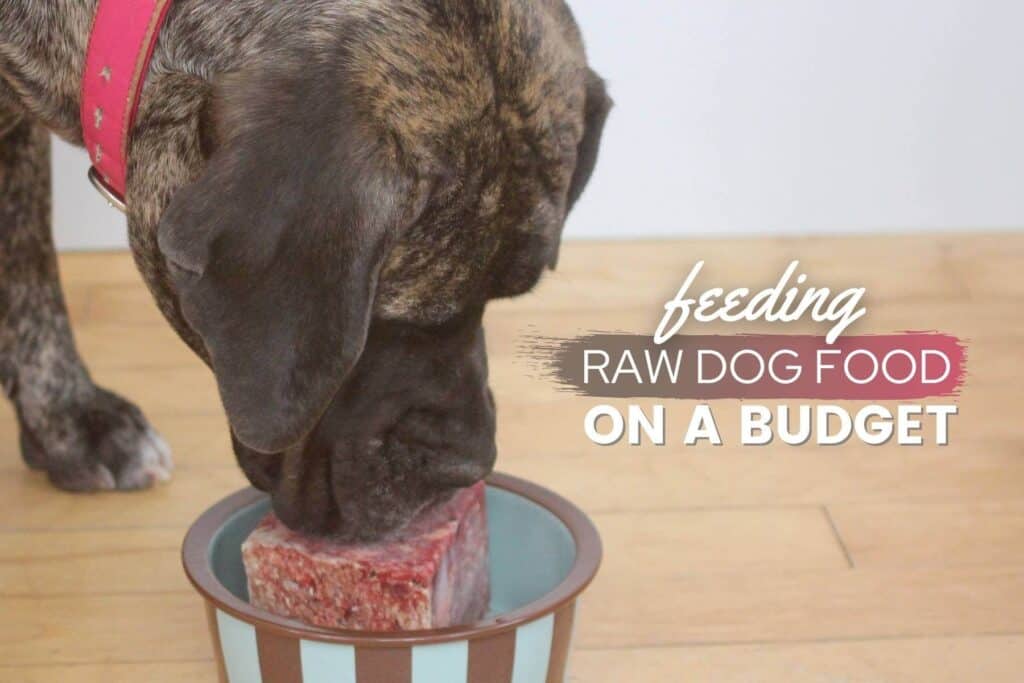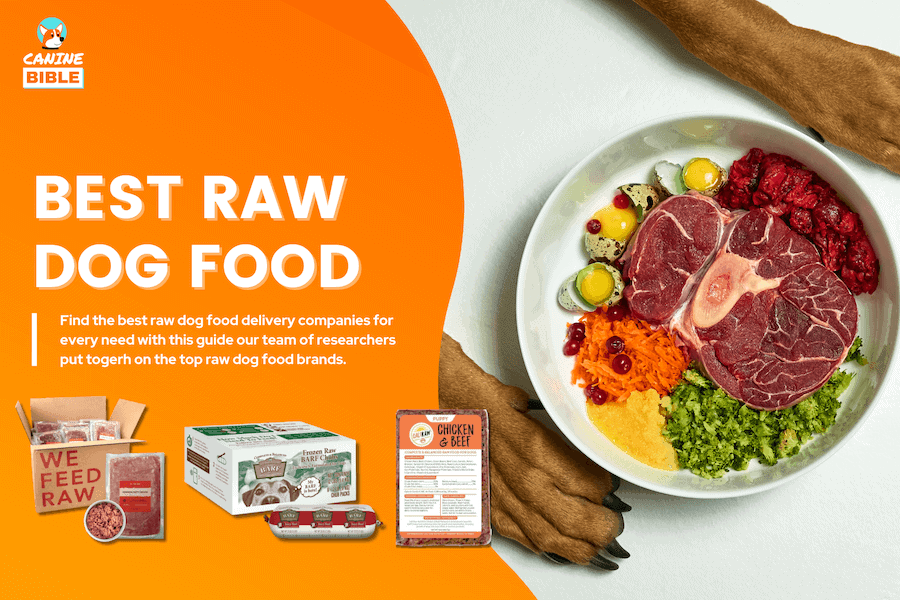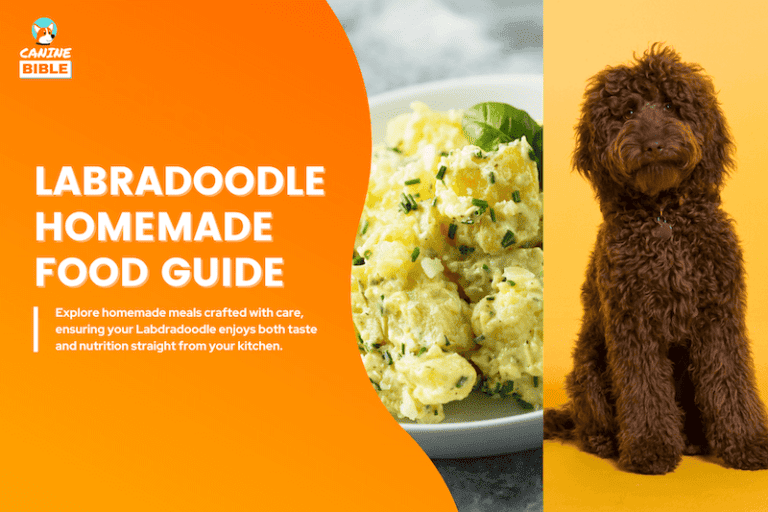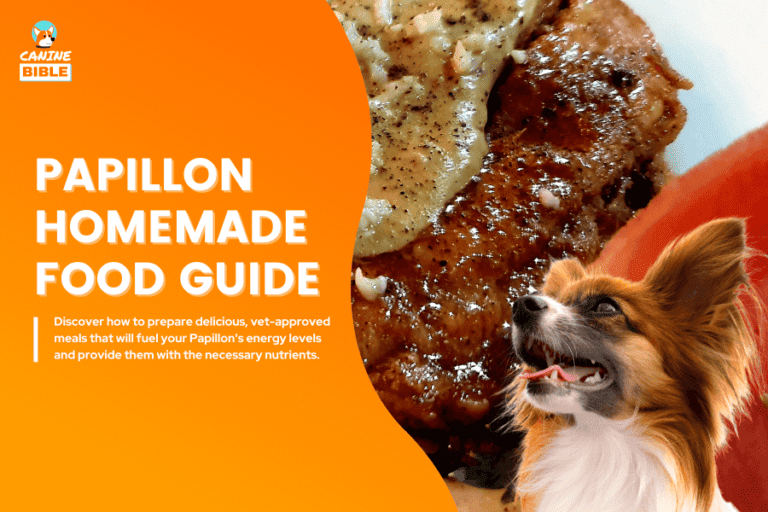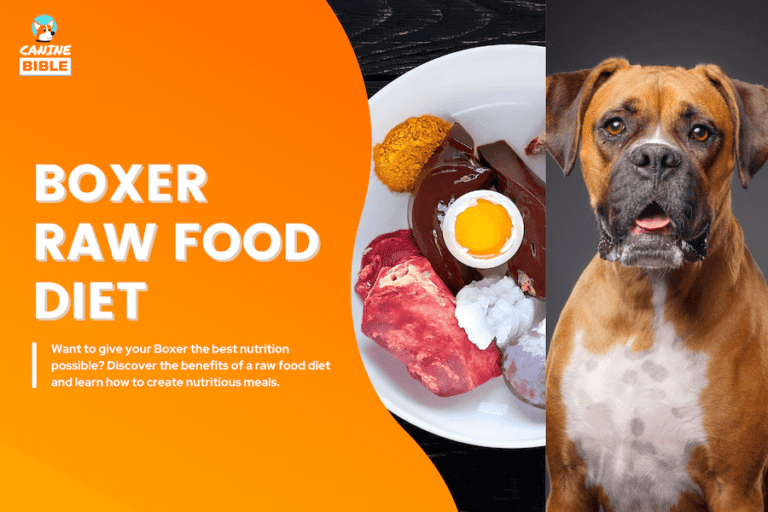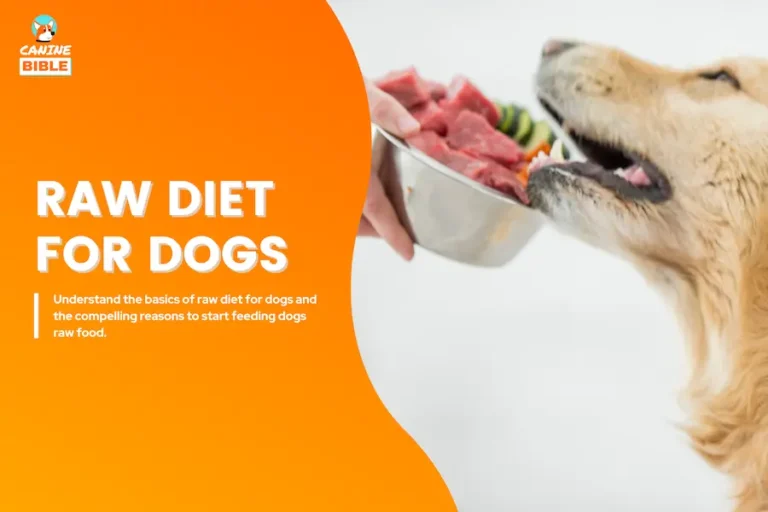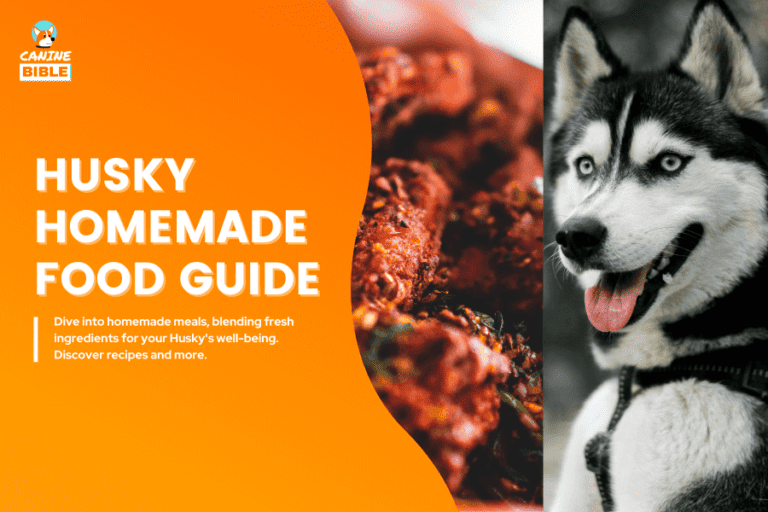Dachshund Raw Dog Food Diet Guide: Recipes, Benefits & FAQs
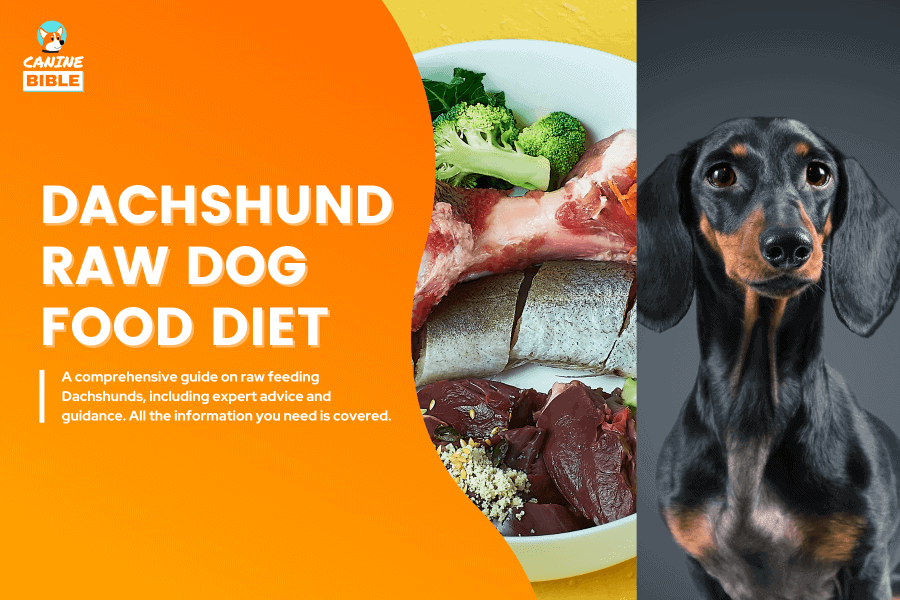
Canine Bible is reader-supported. We receive affiliate commissions via some of our links. This doesn’t affect rankings. Learn more.
Have you ever looked into your dachshund’s sparkling eyes and thought, “Should I feed my adorable sausage-shaped friend a raw food diet?” If so, then you’re barking up the right tree! The concept of a raw food diet for dogs has been gaining traction. We put together this guide to provide breed-specific advice should you be considering raw feeding your Dachshund.
The raw diet could be a game-changer for your beloved wiener dog, but it’s not as simple as tossing them a bone. So, sit, stay, and prepare to fetch a wealth of information that will have you rethinking your dachshund’s dinner. Let’s dive in!
What Is A Dachshund Raw Dog Food Diet?
Raw dog food (aka BARF – Biologically Appropriate Raw Food) is designed to mimic a dog’s ancestral diet based on the dog’s carnivorous and primal instincts. A raw diet represents what dogs ate in the wild millions of years ago. It consists of raw ingredients. All the ingredients are uncooked to preserve the enzyme content, minerals, vitamins, and other vital nutrients.
There are three types of raw dog diets: frozen, freeze-dried, and homemade. A raw dog food diet plan typically consists of the following:
A variation of the BARF model is known as the “prey model raw (PMR)” food. The prey model excludes fruits, dairy, and vegetables.
Can Dachshund Eat Raw Meat?
Yes. Dachshunds (dogs) are true carnivores. They can thrive on a raw meat diet. Dachshunds can eat raw meat and other raw ingredients. Genetic and anatomical research shows dogs have noticeable carnivorous traits that allow them to digest raw meat protein more quickly while killing potential bacteria in decaying meat.
Dogs also have a remarkable omnivorous capacity but are optimized for eating meat. Dachshunds can safely enjoy balanced raw meals. Read our “Can dogs eat raw meat?” article to learn about the research supporting Dachshund’s raw meat consumption.
If you plan to feed raw meat to your dog, you need to do so as part of a balanced raw meal plan with your vet’s supervision.
Dachshund Raw Diet Benefits
Is raw dog food good for Dachshunds?
Dr. Ian Billinghurst, a veterinarian, pioneer, and top advocate of raw feeding dogs, mentions raw food has several positive effects on canine health, including:
A BARF diet ensures dogs eat fresh, wholesome, and allergen-free foods, as no chemicals, additives, or fillers are used in raw diets.
Raw Dog Diet Research
Dachshund Raw Food Risks
There are some potential risks involved when preparing raw food for your dog.
How To Reduce Raw Dog Food Risks
Pro tip: Freeze all your meats for at least 2 to 3 weeks to kill any parasites — Research found that Salmonella is highly sensitive to freezing and showed survival of 1% or less after 48 hours. E. coli proved less sensitive, showing a survival rate ranging from 10% to 30% during the first week of storage. However, after two weeks of storage, most samples declined compared to salmonellae.[6]
Dachshund Raw Diet Cost
The average price of traditional kibble is $1.97 per pound, while high-end kibble is $3.466 per pound.[7] In contrast, according to our calculations, the average price for the market’s most popular, high-end raw commercial foods is $6.4 per pound, with the lower-end raw options costing $3.8 per pound.
We also analyzed the price for the most popular meats. According to the U.S. Bureau of Labor Statistics, beef, chicken, and turkey have an average price per pound of $3.9, $1.5, and $1.28, respectively.
If you switch your Dachshund to a raw homemade diet, your food expenses shouldn’t vary much compared to what you spend on kibble. It might be cheaper. Conversely, buying commercial raw-meat food over traditional kibble is a tad more expensive, but we think the health benefits and convenience are worth the price. Read our feeding raw dog food on a budget guide for tips on how to feed raw for cheap.
Raw Dog Food Nutritional Guidelines
Following the BARF model and The Association of American Feed Control Officials (AAFCO) guidelines, putting your Dachshund on a raw diet requires you to feed him a balanced meal.
The recommended guidelines for a BARF diet consist of 70% uncooked muscle meat, 10% raw edible bone, 10% vegetables and fruit, 5% liver, and 5% other organs.
Dachshund BARF Diet Nutritional Breakdown
| Nutrient | Food | Description |
|---|---|---|
| 70% Muscle Meat | Beef, chicken, turkey, pork, and other meats, depending on what your dog tolerates. Choose lean cuts. Aim for 10% fat but no higher than 20%. | Raw meat is the main source of protein. Builds and repairs muscles and other body tissues. Needed to make new skin cells, grow hair, hormones, enzymes and more. |
| 10% Raw, Edible Bone | Uncooked raw bones, bones with a lot of joints, like necks, tails, and feet. Ground bones are the safest choice. Avoid heavy or big bones - They can break teeth or get stuck in the digestive tract. | Provide essential calcium, phosphorous, and other essential nutrients. |
| 5% Liver | Livers from cow, chicken, or other animals. | Great source of high-quality protein; vitamins A, B12, B6; folic acid; iron; zinc; and essential amino acids. |
| 5% Other Organs | Kidney, spleen, lungs, heart, brain, eyeballs, reproductive organs (testicles, uterus), trachea, stomach, sweetbreads (pancreas and thymus), and tongue. | Organs are a great source of vitamins and minerals. The more organs you add to the diet of your dog, the better the mix of nutrients your dog will receive. |
| 10% Vegetables & Fruit | Broccoli, celery, squash, pumpkin, spinach, leafy greens, and carrots. Fruit such as apples, cranberries, and blueberries. Fresh herbs such as parsley, basil, and oregano. (Never feed toxic fruits or veggies) | Fruit provide antioxidants while vegetables have carotenoids, flavonoids, antioxidants, and many other phytochemicals that are beneficial to immune function and health dogs. |
A Dachshund raw diet plan should follow the AAFCO’s guidelines.[8] AFFCO is the entity regulating dog food’s nutritional value in commercial dog food. It states every dog meal should have six indispensable nutrients to create a balanced meal that supports life and proper function in dogs. These include protein, carbohydrates, fat, vitamins, minerals, and water.
Before crafting your dog’s meals, consider your pup’s weight, health conditions, size, and activity level.
*If feeding the “Prey” model, this method typically consists of 80% muscle meat, 10% bone, and 10% organs (half of which is liver.). No fruits or veggies.
Dachshund Raw Diet Supplement
A balanced raw diet shouldn’t require additional supplementation. However, poorly made raw diets by inexperienced dog parents, a dog’s unique dietary needs, or health conditions may require additional supplementation to specific nutrients. Always consult with your vet. Adding a multivitamin like Zesty Paws Multivitamin Chews ensures your Dachshund gets the recommended balance of vitamins and minerals.
Chapter 2: Cooking, Recipes & FeedingBest Raw Dog Food For Dachshunds
Are you confused about preparing a balanced Dachshund raw meat diet? Do you have a busy lifestyle with little cooking time for your pup? Don’t know where to start? If you answer ‘yes’ to one or more of these questions, a raw dog food delivery service is the best way to let your dog reap the benefits of eating raw.
We Feed Raw is one of our favorite choices and offers the best BARF diet recipes for dogs available on the market. They deliver Biologically Appropriate Raw Food straight to your door. Their formula is a balanced blend of raw meat, fruits, vegetables, organs, and bones. Plus, it’s supplemented with other key ingredients.
All of their ingredients are USDA-sourced. Their formulas are developed with the input of a veterinary nutritionist to meet the nutritional guidelines AAFCO sets.
How Much Raw Food To Feed Dachshund?
The body weight percentage method is the most straightforward alternative to many raw feeders (new and experienced). It’s simple, and it works with any diet.
Generally, feed your dog about 2% to 4% of his ideal adult weight.
Please consider his metabolism, activity level, lifestyle, health, and other factors to determine the perfect amount.
Dachshund Raw Feeding Chart
You have four scenarios to choose from to determine how much to feed your dog. To calculate your dog’s daily raw food intake, multiply his weight times the percentages.
For a Dachshund that weighs 25 pounds, here is how much raw food you would need to feed him daily.
| Scenarios | Raw Food (lbs) |
|---|---|
| Weight maintenance | 0.5 to 0.63 lbs |
| Active dogs | 0.75 to 1 lbs |
| Senior, less active, or overweight dogs | 0.38 to 0.5 lbs |
| Underweight dogs | 0.75 to 0.88 lbs |
Adult dogs typically eat two meals per day. So, break the total amount into two meals per day.
Raw Diet For Dachshund Puppy
A Dachshund puppy’s raw diet plan differs from an adult Dachshund’s.
Puppies need more protein, fat, calcium, and phosphorus than adult dogs. Feed puppies 15% bone and less than 20% fat to ensure enough nutrients and minerals. Raw food for puppies also should abide by AAFCO guidelines and include the six essential nutrients mentioned earlier.
How Much Raw Food Should Dachshund Puppies Get?
Puppies need more calories than adult dogs and should eat about 5% to 10% of their weight to support their growth.
Dachshund Puppy Raw Feeding Chart
General raw feeding guidelines for puppies:
Puppies should be fed 3 to 4 times per day. When they mature (12 months & up), you can feed them twice daily.
Dachshund Raw Food: Cooking, Handling & Serving Tips
Making raw dog food for Dachshunds requires meticulous attention to detail at every step.
Pro tip: Make sure your dog’s bowl is made from stainless steel like this one. Other materials like plastic and porcelain can trap germs over time due to the porosity of their surfaces.
How to Make Dachshund Raw Food (Video)
Watch this video and learn to make raw dog food for Dachshunds.
Raw Dog Food Recipes For Dachshunds
If you are ready to start your Dachshund on a raw diet plan, we’ve listed below our favorite Dachshund raw diet recipes.
As a bonus, we included a special treat recipe that is tasty and packed with impressive health benefits. It has our favorite secret ingredient, dog CBD oil. CBD oil can help with seizures, anxiety, arthritis, inflammation, pain, wellness, and other health problems.
Note: Please consult with your pet’s veterinarian & use personal judgment when applying this information to your dog’s diet. The recipes below do not include serving size because portions vary depending on your dog’s breed, weight, activity level, age, and health.
CBD-Infused Dog Treat
Every dog loves a tasty treat, and many agree that nothing beats nutritious, therapeutic, and delicious homemade CBD oil dog treats. These goodies are made with Pumpkin and other essential vitamins and minerals (like iron, potassium, and vitamin A), which help promote better digestion and hydration. Coconut is also added for skin and coat health and allergy reduction.
Just be sure to check with your vet before to ensure CBD is safe for your pup and you are giving the correct dosage.
You can also purchase already-made CBD dog treats so your dog can experience CBD’s benefits without the cooking.
Ingredients
Total: Makes 24 treats
Directions
- Preheat the oven to 350ºF. Grease a dog cookie baking tray with coconut oil.
- Core and grate the apples, then peel and grate the carrots.
- Combine gluten-free flour, oats, and coconut sugar in a medium-sized bowl. In another medium-sized bowl, beat the egg. Then, add coconut oil, water, and grated apples and carrots.
- Add wet ingredients to dry ingredients bowl; mix thoroughly. Finally, add CBD oil and mix once more.
- Using a Tbsp measuring spoon, portion the dog biscuits and press them into the dog treat baking pan. Bake for 32-37 minutes or until the biscuits are firm and golden brown outside.
- Store in an air-tight container.
Notes
The number of dog treats will vary depending on the mold size you use. Try to make each dog treat have 2-5 mg of CBD.
Recipe from: Truth Theory
Ground Beef, Chicken Liver, Veggies Mix
This raw meat food recipe for dogs is among our favorites. Easy to digest and packed with all the essential nutrients dogs need.
Ingredients
Directions
- Put carrot, apple, and spinach in a food processor and process until finely chopped.
- Add remaining ingredients except for beef and process until well combined.
- Transfer the mixture to a large bowl and add the beef until well-mixed.
- Form the size of your palm into patties and place them on a parchment-lined baking sheet.
- Freeze patties and transfer them to a storage container to keep them frozen.
- The night before you wish to feed, remove the patties from the freezer and place them in the refrigerator to thaw.
Raw Boneless Turkey & Egg Dog
If you want to make a simple recipe that can last you well beyond a week, or perhaps you have more than one Dachshund at home, this recipe will make 11 pounds of raw food, which is 6-7 days’ worth of food for a 50-pound dog, or two smaller dogs.
Ingredients
Directions
- If you have a grinder, grind the chicken heart and beef liver. If you don’t have a grinder, chop the liver and heart into small cubes.
- Puree the eggs, kale, broccoli, dandelion greens, berries, bone meal, pumpkin seed powder, salt, and kelp in a food processor.
- Mix the ground turkey, liver, heart, and veggie/berry.
- Place the mixture into smaller containers and place them in your freezer. It’s best to freeze your food in 1-3 day portions.
Recipe From: Dog Naturally Magazine
Organ Patties
This Dachshund homemade raw dog food recipe should be served as a tasty treat or a variety of feed options once or twice a week.
Make it with any excess organs. This recipe doesn’t include bones and cartilage, so don’t use it as a regular meal, but as a raw treat your Dachshund can enjoy now and then.
Ingredients
Directions
- The first thing you’ll need to do is prepare the ingredients. You must chop the organs or put them in a food processor. The same goes for vegetables.
- Once everything is minced, mix it all. Add the raw egg with the shell. You can then form the mixture into patties and pop them in the freezer until you’re ready to give them to your dog.
Recipe From: Daily Dog Stuff
Chicken & Greens
This is another easy homemade raw dog food recipe for Dachshunds to add to his menu.
It uses raw chicken with a veggie mix. It’s full of nutrients and vitamins.
Ingredients
Directions
Simply mix and freeze or serve. The eggs should be lightly boiled as protection against Salmonella.
Recipe From: Top Dog Tips
Want more recipes? This raw dog food cookbook has a ton of more raw food recipes for Dachshunds.
Best Raw Cooking Practices
Follow these raw cooking guidelines to make a Dachshund’s safe and healthy raw recipe.
Pro tip: Visit your local Mexican market, Asian market, or farmer’s market —Typically, you will find a wider variety of organ meats at lower prices. You can also have frozen organ meats delivered to your door on ice.
How to Transition Your Dachshund To A Raw Diet
Raw feeding your Dachshund for the first time must be done progressively to allow his digestive tract to adjust and prevent stomach issues.
Below is a general schedule for transitioning from kibble to a raw diet.
Don’t change your dog’s food abruptly. It can cause an upset stomach, diarrhea, or vomiting. Monitor your dog’s health closely. If you notice any adverse reaction to the new diet, you should go back a week in the transition plan and proceed slowly.
Foods Your Dachshund Should Never Eat
These ingredients are hazardous to dogs. Never use them in your recipes.
The principal toxic foods include:
Check out the complete list of food you should never feed your dog. Consider having it on your refrigerator as a reminder.
Raw Foods To Never Feed Dogs
Never feed a raw potato to your dog. Potatoes contain solanine, a toxic compound to some dogs, says the AKC. Raw tomatoes also have solanine. Cooking them reduces the levels of solanine, but it’s better to stay on the safe side by avoiding them.
Don’t feed salmon or salmonid species of fish. It can contain the Neorickettsia helminthoeca parasite, which causes salmon poisoning disease. This disease can be fatal. The small brittle bones can choke your dog or lodge in his stomach or intestines.
Boneless fish (especially oily fish) are allowed only once a week. Never give fish with sharp spines and barbs. No wild pork, bear meat, or meats from wild animals are allowed, not even after freezing. Wild meats contain more parasites than farm-raised meats.
Always research every ingredient before feeding it to your dog.
Dachshund That Shouldn’t Eat Raw Dog Food
Raw diets are not suited for all dogs. Dogs with kidney or liver problems should avoid eating raw. Raw foods are generally high in protein; excess protein can stress these organs, worsening either condition.
Dr. Doug Knueven, a holistic medicine specialist who consults for Nature’s Variety (Instinct, a raw pet food brand), says that dogs on chemotherapy or immune-suppressing drugs should be restricted from eating raw food.
For dogs suffering from pancreatitis or digestive problems, starting with a fresh dog food recipe diet before switching to raw is recommended.
Dachshund Raw Diet vs Kibble
Is raw dog food better than kibble? Both diets have pros and cons, but it all comes down to what’s best for your Dachshund.
If you still have lingering questions or concerns about raw feeding dogs or the whole kibble vs. raw debate, Feeding Dogs: The Science Behind The Dry Versus Raw Debate is a must-read for all interested in getting answers to this controversial topic.
Here is a glance at how they stack up against each other.
| KIBBLE | RAW DIET |
|---|---|
| No additives or any chemical is added. | No additives or any type of chemical is added. |
| Cheaper than a raw diet | Homemade raw food is equally expensive or cheaper. Commercially available raw food is a bit more expensive than kibble. |
| Low standards for what can and cannot be included in commercial pet food, | Typically, raw-based diets use high-quality meats and fresh ingredients. Quality standards for safety, hygiene, and manufacturing tend to be more rigorous due to the raw nature of the food. |
| Longer shelf-life and doesn’t spoil quickly. | Raw food doesn’t last long after being served. Leftovers for the day need to be discarded. |
| Easy to store and carry when traveling | Requires freezer space and only the raw-freeze-dried option is suitable for traveling. |
Is A Raw Food Diet Good For Your Dachshund?
Is raw food good for Dachshunds? Here is what supporters and veterinarians had to say.
Monitor Weight & Health
As a dog owner, you must understand that your Dachshund’s weight is one of the most influential longevity, quality of life, and disease prevention. This is why monitoring his weight on any new diet is vital.
A poorly made raw diet can lead to an extreme lack of energy, skin or coat disorders, allergies, weight loss, malnutrition, or obesity. If you notice any of these symptoms, immediately stop feeding this food to your dog and call your vet.
Track your dog’s health and weight for a month to ensure that raw feeding does not adversely affect him.
Dachshund Raw Diet — Conclusion & Alternatives
Raw-feeding dogs it’s more than just a trend. As we’ve discovered, a well-managed raw diet can provide a pack of benefits for your long-bodied friend, from a shinier coat to improved overall vitality.
Given its potential health benefits, the raw diet could be a game-changer for your Dachshund. But remember, it’s not as simple as giving Fido the first bone you find. Ensuring a balanced and safe diet requires knowledge, dedication, and regular consultations with your vet.
Our journey underscores the importance of putting our dog’s health first, acknowledging the power of diet in their lives. Because our dachshunds aren’t just pets—they’re family. And there’s nothing we wouldn’t do for family, even if it means preparing a gourmet raw meal for a dog who loves to dig in the backyard.
There are also alternative options, such as high-quality commercial dog foods. Our best dog food for Dachshunds guide can help you find the best options for this breed. Similarly, homemade food for Dachshunds can provide a well-balanced and healthy diet. Ultimately, the most important thing is to prioritize your dog’s health and well-being when making dietary choices. If you are not a fan of either option, explore vegan dog food.
Like It? Subscribe & Share!
Canine Bible authorship represents the unified voice of our entire editorial team and our in-house veterinarians rather than a single author. Each article, blog post, and review published under the Canine Bible name undergoes a rigorous review process, involving all team members to guarantee accuracy and up-to-date in accordance with the latest veterinarian research. This collaborative effort is an integral part of our editorial process and aligns with our four pillars of content creation. This approach ensures our content is backed by expert knowledge and factual information, offering our readers reliable, actionable, and trustworthy content.

